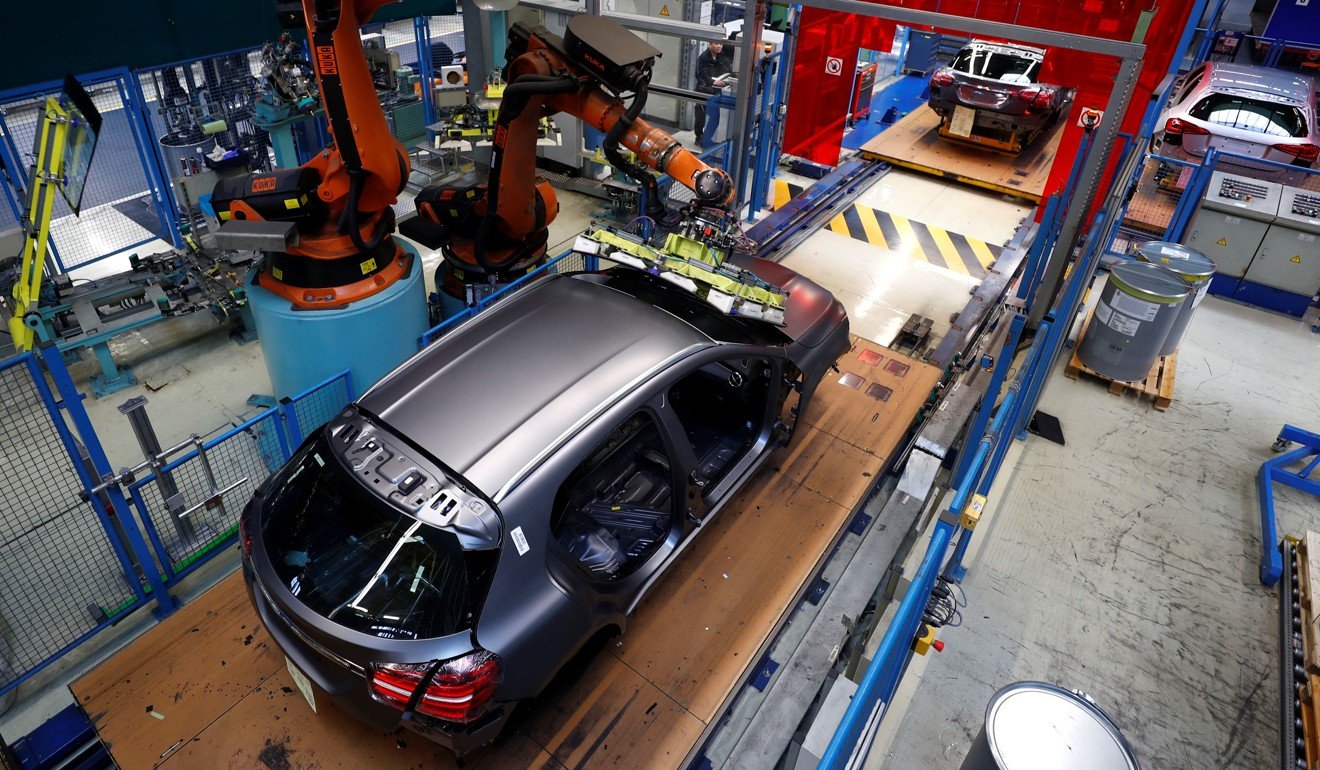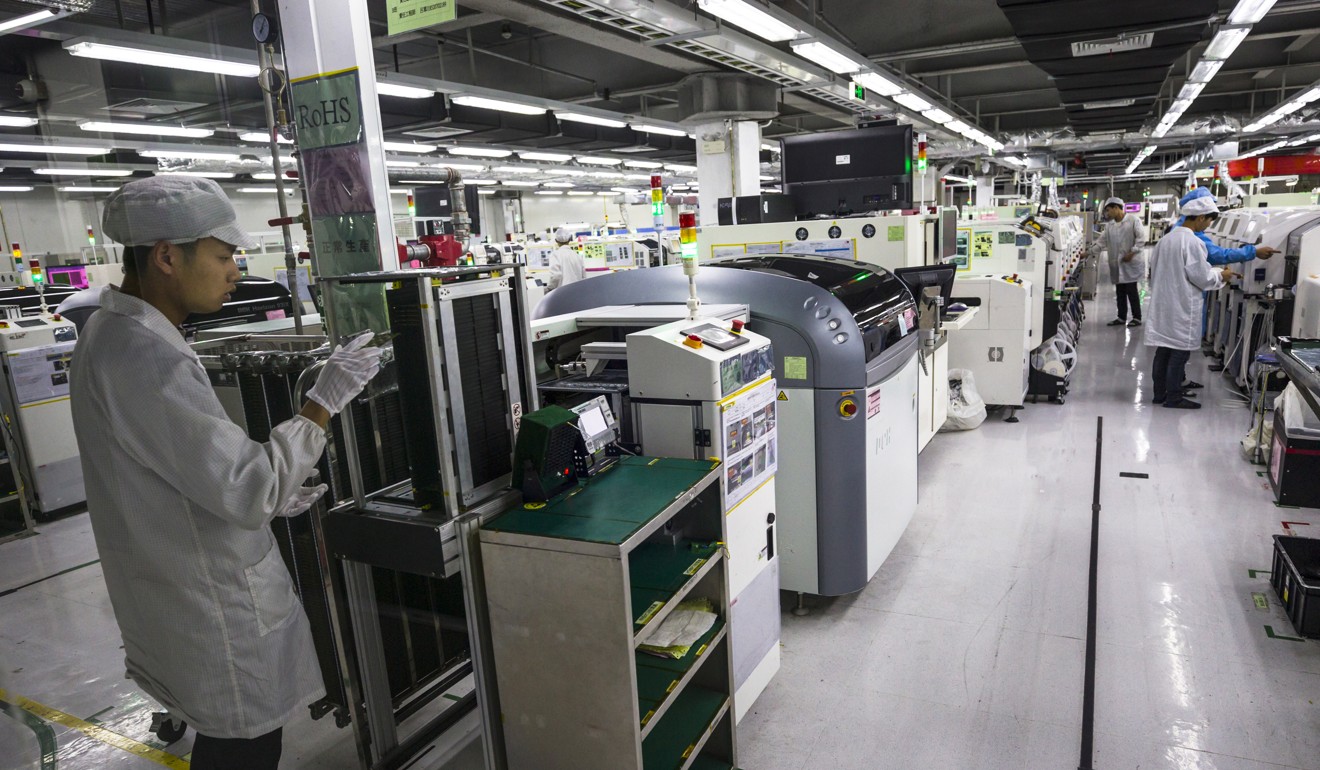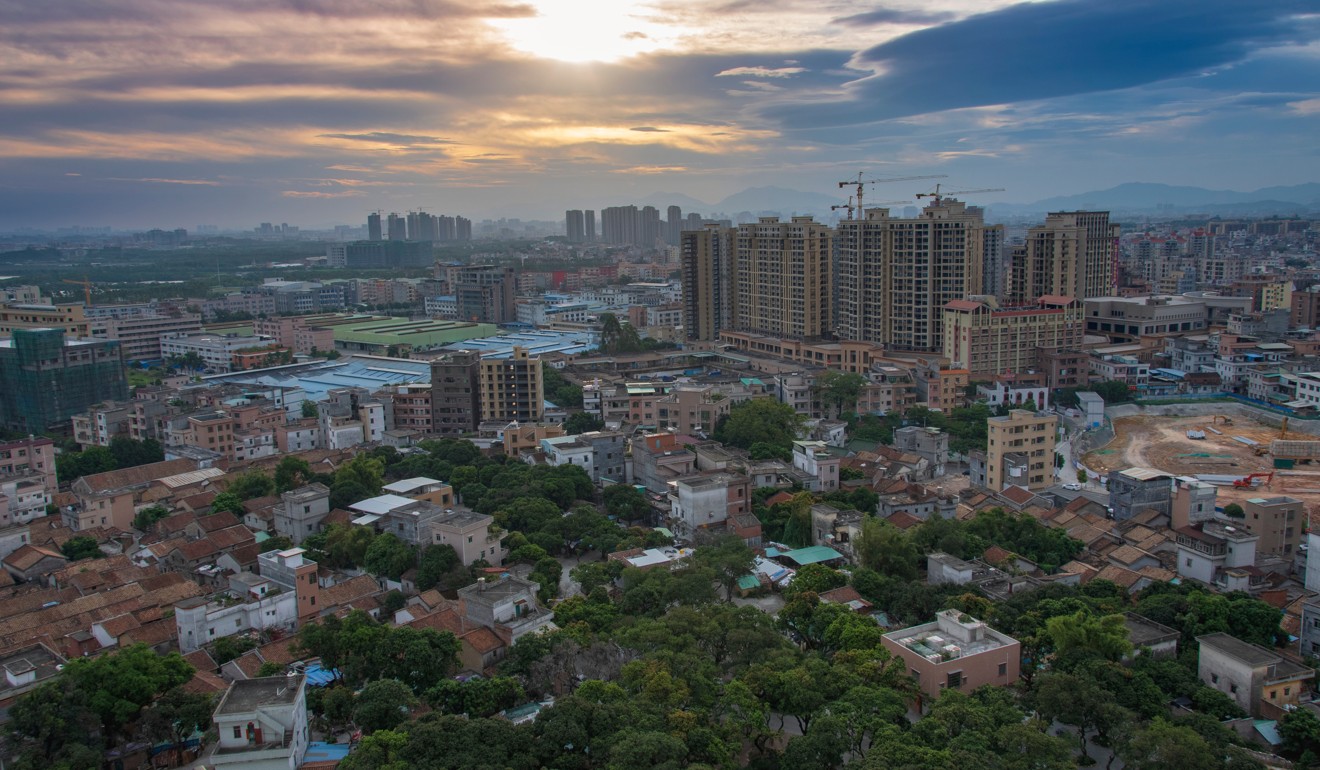
Could robotic automation replace China's 100 million workers in its manufacturing industry?
- Companies, including iPhone manufacturer Foxconn, are turning to robots with around 100 million workers in China’s manufacturing industry under threat
- The city of Dongguan in China’s industrial and export hub allocated US$56.8 million to boost automation in factories last year alone
Migrant worker Xia Xiaobo is the face of China’s new unemployment class: those displaced by automation.
Xia, age 34, quit his job at a Japanese-owned electronics factory in Dongguan last year due to his growing concern how the extensive increase in automation in the industrial city would affect his future job prospects.
In contrast to many of his former colleagues who moved to small manufacturing firms where robots had not yet been introduced to a large extent, Xia sought to upgrade his skills to insulate himself against the automation movement.
He spent the equivalent of three months’ salary on a vocational training course starting in August and will begin looking for a new job after he finishes in mid-March.
“I am learning automation programming to see if I can find any job in intelligent manufacturing,” Xia said.

Around 100 million workers are employed in China’s manufacturing industry, with data from the National Bureau of Statistics showing manufacturing accounted for about 30 per cent of the nation’s gross domestic product in the first three quarters of 2018.
As part of its effort to upgrade its manufacturing sector, the Chinese government started a campaign in 2014 with the overall aim gradually replace manual labour with robots, with the heavily industrialised provinces of Jiangsu, Zhejiang, and Guangdong among those introducing the new technology on a massive scale.
The city government of Dongguan, in the heart of the Guangdong province that is known as being China’s industrial and export hub, allocated 385 million yuan (US$56.8 million) to boost automation in factories last year alone.
In January, Xiao Yafei, the mayor of Dongguan, said the city had cut its manufacturing workforce by 280,000 over the past five years through the installation of 91,000 robots.
“I began to feel the pressure from automation two years ago when my friend told me that the government was replacing workers with robots. The extent of automation will definitely increase, so if I don’t equip myself with new skills, I will end up being jobless,” said Xia.
He used to work 10-hour shifts overseeing 104 machines on 13 production lines, but with only two members of staff overseeing each production line, Xia feared that even these workers would soon be replaced.
Foxconn, the Taiwanese-owned electronics giant which makes half of the world’s iPhones, plans to fully automate 30 per cent of its production by 2020.
The company reported that it had already cut more than 400,000 jobs by deploying tens of thousands of robots between 2012 and 2016.
However, fear of automation is not yet universal among all manufacturing workers.
One worker at Foxconn’s production facility in Shenzhen said that there is no great fear about the introduction of robots in his workplace.
“We do [original equipment manufacturing] for Huawei, Google and other companies. We use a lot of mechanical arms on the production lines but not real robots,” said one worker surnamed Liu at Foxconn’s production facility in Shenzhen, who declined to provide his full name because he was not authorised to speak publicly.
Liu’s basic salary of 2,650 yuan (US$391) per month is a relatively low expense for Foxconn even though he is unable to work round the clock like a robot.

He regularly works more than 12 hours a day, six days a week, with the four hours overtime each day needed to support his family.
“Nobody likes working overtime, but here we actually strive for any overtime opportunity,” Liu added.
China surpassed Japan as the world’s largest market for industrial robots in 2017, with The International Federation of Robotics estimating that China will have installed at least 800,000 industrial robots by 2020.
A survey of selected companies by the China Development Research Foundation in September showed that companies had cut 30 per cent to 40 per cent of their labour force between 2015 to 2017 due to automation.
The survey noted that a kitchen appliance company in Hangzhou cut its workforce to 193 in 2017, from 330 in 2014, with most of the laid off workers returning to their hometowns, the company said.
The survey also cited a report from the Hangzhou government that 37 companies had eliminated 800 positions after introducing artificial intelligence in the workplace, with 539 of the displaced workers transferring to other positions internally and 261 leaving the companies altogether.

However, many of the workers who have been forced out due to automation are finding that internal transfers are in fact demotions in terms of status and pay.
Li Ming, a mould polisher in Dongguan, chose to leave his company after the factory tried to transfer him to another position after his production line was replaced by robots.
“I declined to stay because my salary for the new position was cut in half. I earned 5,000 yuan (US$737) each month before, but I would be paid less than 3,000 yuan in the new role,” said Li, who found a new polisher job at another factory in Shenzhen.
But those unable to transfer or find a new position are struggling to find the same level of income outside the manufacturing industry.
“Those who are losing their jobs to automation are trying their luck in China’s swelling service sector. Unfortunately, informal, low-tech and low-end service sector workers are struggling to make a living wage,” said Jenny Chan, an assistant professor of sociology at Hong Kong Polytechnic University.
“A more polarised workforce may result. Professionals and skilled technicians will enjoy higher income and social status in a smart knowledge-intensive workplace, while manual labourers will experience increasing job insecurity and degradation at work.
“The acquisition of a marketable job skill at an affordable cost is still a big challenge.
“The government thus far has not provided specific support to needy workers, such as financial subsidies for vocational education and training for adults. Private employers are not incentivised to transfer less competitive workers to new positions with similar salaries and benefits, either.”
Another sector that may be heavily affected by automation is the financial industry, with a study by the Boston Consulting Group last year predicting that 2.28 million jobs in China’s banking, insurance, and securities sectors would be affected by 2027, “particularly those involving mechanical and repetitious operations”.
China’s “Made in China 2025” national campaign encourages automation and intelligent manufacturing, and manufacturing robots are part of that agenda.
However, China’s leading position on automation has been weakened by the ongoing trade war with the United States.
China’s industrial robot production fell by 12.1 per cent in December from a year earlier after a drop of 7 per cent in November, according to data published by the National Bureau of Statistics.

